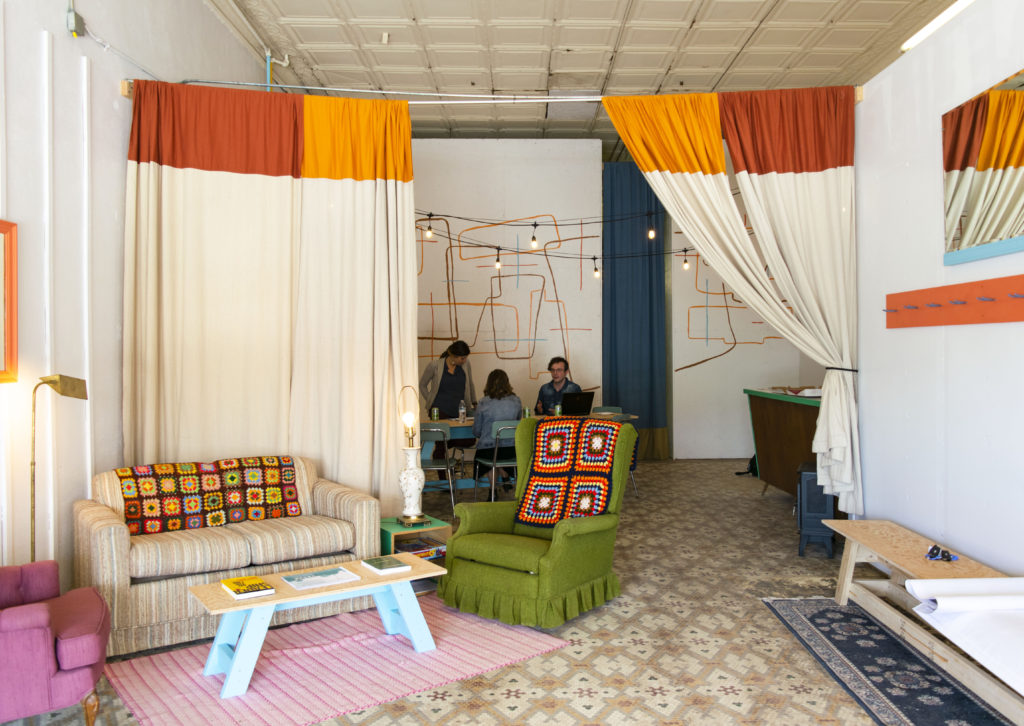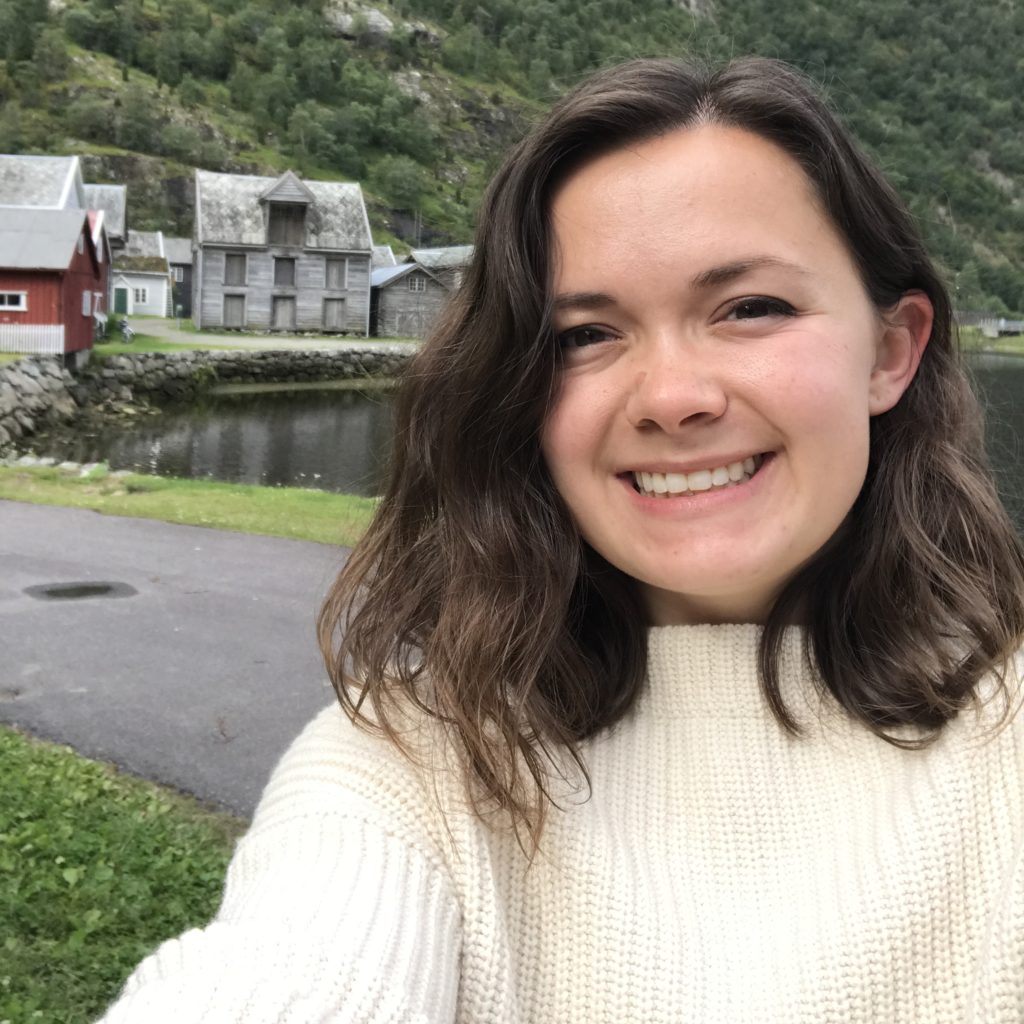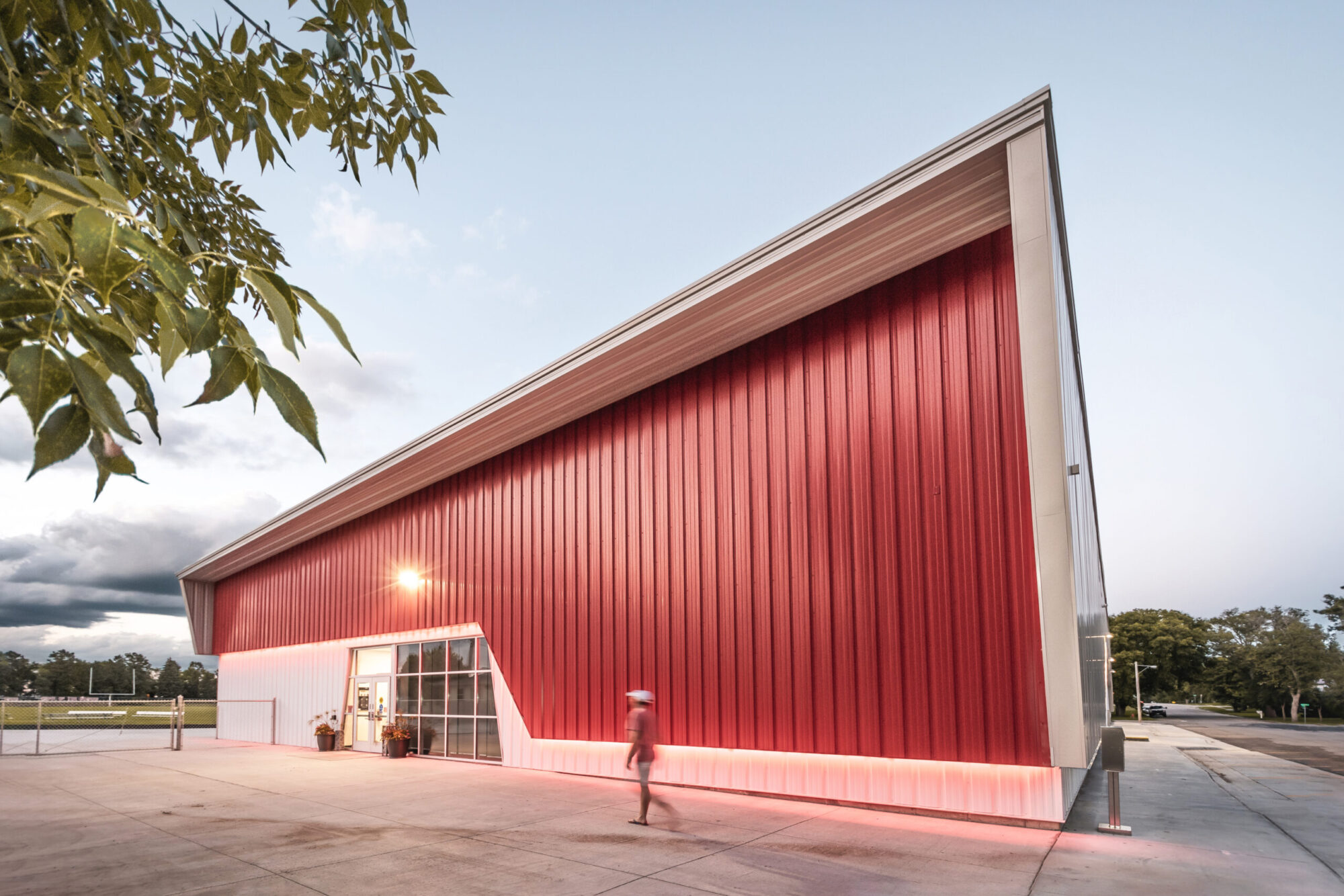Miranda Moen
Due to its length, this article has been formatted into a two-part series. Begin reading Building Innovative Partnerships for Projects in Rural Areas, Part 1: Spring Grove Heritage House.
Secondly, because of its unique partnership and mission, I want to share the Yes! House project I am undertaking at the moment in Granite Falls, Minnesota (Southwest/West-Central, pop. 2,897). I am partnering with a nonprofit rural arts organization called The Department of Public Transformation to design a creative community gathering space and artist residency in an abandoned historic storefront along a major thoroughfare in the city’s downtown. This project was possible thanks to a visionary rural artist/owner of DoPT – Ashley Hanson.
In 2018, a Granite Falls resident donated the historic building for the Small Town Artist in Residence program and the Yes! House project commenced. Hanson has done the majority of the heavy lifting on the project, from fundraising to social media marketing, but has also collaborated with many, many people – a key source of her innovation. A couple of important collaborators include “Homeboat,” a wonderful collective of “doers” (architects, designers, etc.), and the Southwest Minnesota Housing Partnership / Partnership Art and their architect James Arentson, an Enterprise Rose Fellow from 2015-2017. Arentson helped SWMHP win an important Community Development Investment grant from ArtPlace America which funded Homeboat’s research for this project alongside others serving the southwest region.
In the “Pre-Design” phase of this project, Homeboat conducted extensive research to assist in creating and further developing a process called Creative Community Design Build (CCDB). In addition to intensive research, interviews and outreach, Homeboat ultimately conducted community-involved workshops for design input resulting in a 5-day renovation of a section of the Yes! House building to serve early programming and events for fundraising and community building.

In May 2019, I was brought onto the project by Ashley to be the team’s architectural designer. For background, Architect James Arentson had originally planned to do the design-work but due to a busy schedule, both Ashley and James decided to bring me onto the team. Besides being honored to be part of this project, I found this step to be incredibly encouraging and supportive of emerging professionals in architecture and artistic community development overall. I am in awe of the vision both James and Ashley have when it comes to gathering people with many different talents to ultimately create a highly collaborative and innovative project.
At this point in the process, I have just begun PreDesign and Schematic Design phases for the Yes! House. I have visited the site two times, gathered research (as-builts, outreach and community involvement) and countless photos. While this building is tricky due to its historic nature, I feel supported knowing that James will be my AXP supervisor for this project and ultimately review all of my drawings (which is legally required as I am unlicensed), giving me the opportunity to grow at a comfortable pace. Our next meeting is on the construction process, which will likely be a design-build with the community. Hopefully, I’ll be able to share more on this as it develops!
In closing, I have learned that long-term planning has been essential to the development and accessibility of these projects to small towns and that artist programs and funding can be a key part of innovation in architecture. Furthermore, in sharing these projects, I hope other architects, engineers, builders and especially emerging professionals see that there are avenues to doing innovative work, whether that is in rural regions or larger cities. While the above projects may not explicitly include rural projects (outside of towns), I believe they are part of the beginning. I hope this contribution sheds some light on how architects in South Dakota can access these types of projects in their own region and perhaps partake in shaping a new type of architectural profession for upcoming generations.
Featured image: Yes! House building (left) next to its “twin” that has been restored as the Granite Falls State Bank. We are hoping to copy to restore the facade so they are identical. Photo Credits: Miranda Moen 2019
About Miranda Moen

Miranda Moen is an Architectural Designer based in Austin, Minnesota. Moen is passionate about rural design and cultural heritage research, working with rural artists, economic development leaders, and private clients in Southern Minnesota and Northern Iowa.

AIA South Dakota is the professional non-profit membership association of architects, future architects, and partners in the building and design industries, and the state chapter of the American Institute of Architects (AIA) AIA South Dakota advances the mission that design matters in every South Dakota community.


